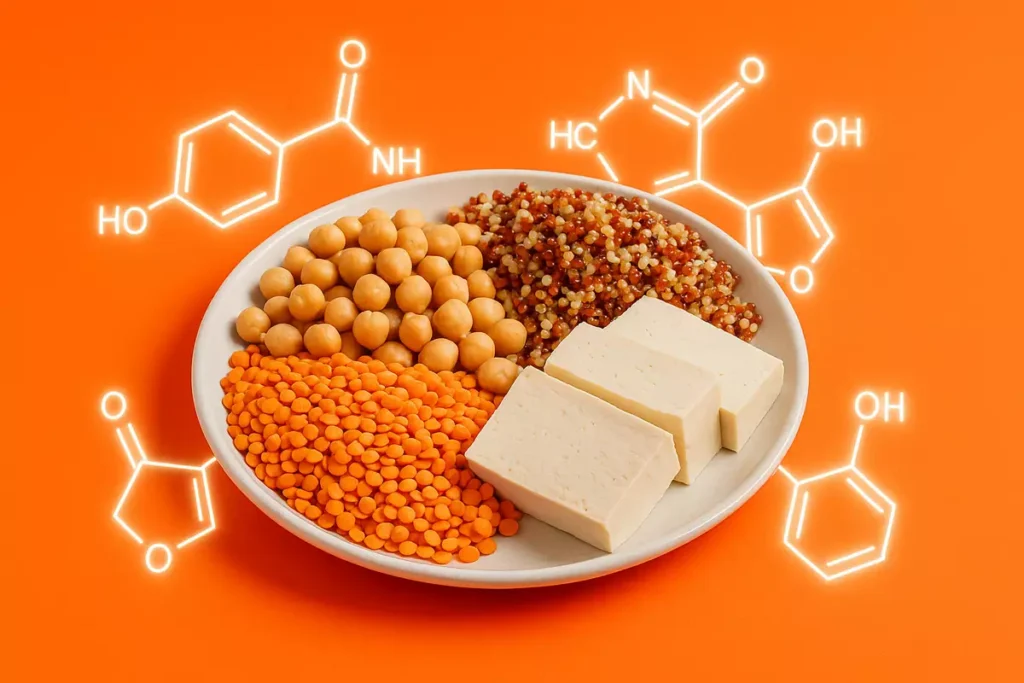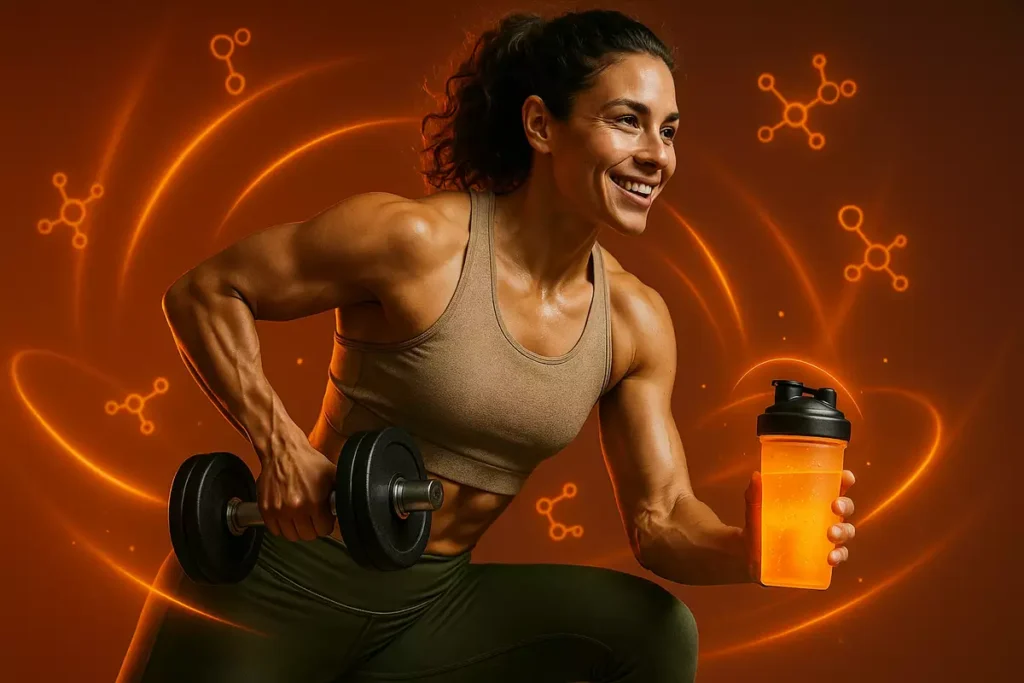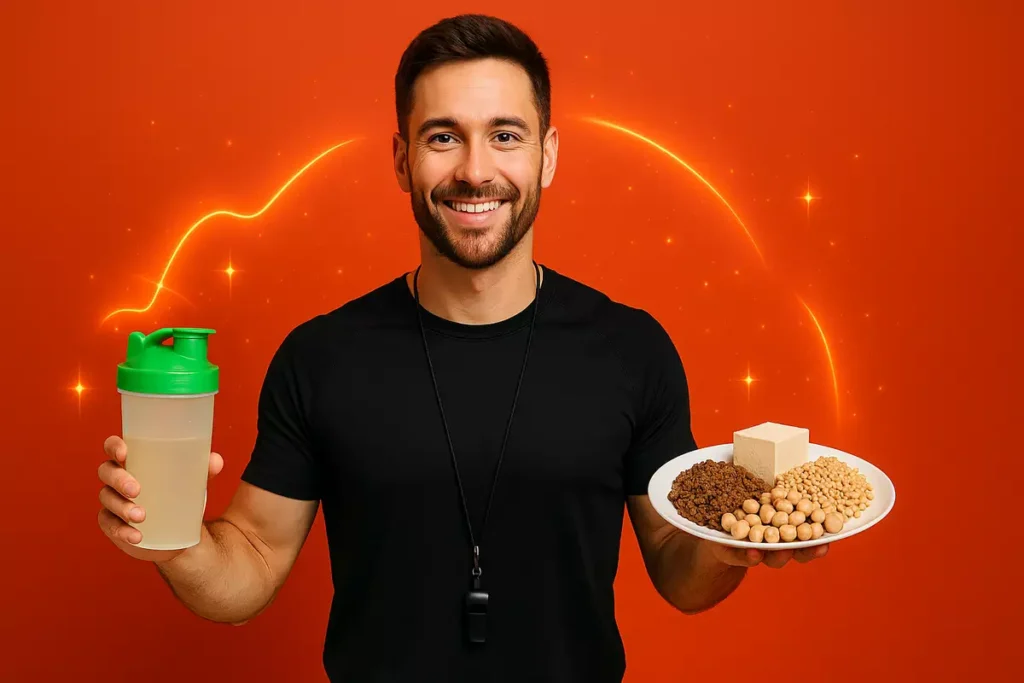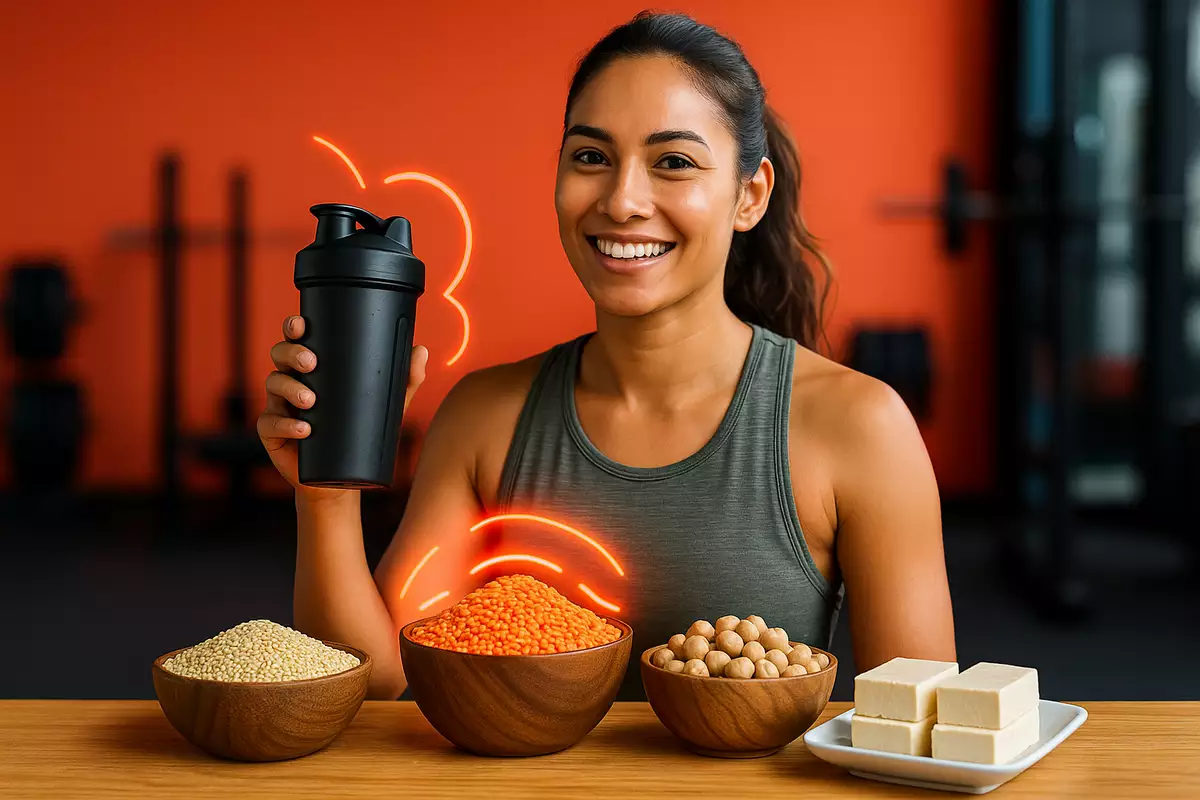Plant-based athletes often crush their training but still wonder: Am I getting enough protein for peak performance and recovery?
The truth is, even with a well-planned vegan or vegetarian diet, hitting complete amino acid needs can be tough. That’s where Essential Amino Acids (EAAs) step in.
EAAs help close the protein gap, support recovery, and protect muscle mass — making them a smart tool for athletes pushing their limits.
Table of contents
Quick Answer
If you’re a plant-based athlete, you’ve probably wondered whether Essential Amino Acids (EAAs) are necessary to hit your protein goals.
The short answer: EAAs aren’t always mandatory, but they can be a real game-changer when your training demands more recovery than plant protein alone can provide.
As a coach and athlete myself, I’ve seen both sides — athletes who thrive on whole plant foods and others who benefit from adding EAAs to close the gap.
Why Protein Is a Challenge on a Plant-Based Diet

Plant-based diets are powerful for health and performance.
But let’s be honest — getting enough high-quality protein can be tricky. Many plant foods contain protein, but they often lack one or more essential amino acids.
For example, beans are low in methionine, while grains are lower in lysine. This means you need variety and volume to hit complete protein needs.
When I tried going mostly plant-based for a while, I found myself eating massive amounts of lentils and tofu just to get close to my target. It was doable, but not always practical. And that’s where EAAs came into play.
For a deeper dive, check out this guide on EAAs vs. whole food protein.
What Are EAAs and How They Help
Essential Amino Acids are the nine amino acids your body can’t produce on its own.
They’re critical for muscle repair, recovery, and growth. For athletes, getting all nine consistently is the difference between breaking down muscle and building it back stronger.
Unlike standard protein powders, EAAs go straight to work because they don’t require heavy digestion. That’s why I often recommend them to plant-based athletes who struggle with either hitting enough protein or digesting large meals.
If you want to know the most effective blend, I recommend reading about the best EAA ratio for muscle growth.
Benefits of EAAs for Plant-Based Athletes

EAAs help in three main ways:
- Filling Amino Acid Gaps: They ensure you’re not missing key amino acids your muscles need.
- Supporting Recovery: I noticed less soreness and faster bounce-back after hard sessions when I used EAAs during my own plant-based experiment.
- Protecting Muscle Mass: One of my clients, Daniel from Germany, was training for a half-marathon. Despite eating lentils, beans, and tofu, he kept feeling worn down.
Once we added EAAs post-workout, his recovery improved, and he maintained lean muscle through his high-mileage weeks. For more details, here’s a guide on EAA post-workout recovery shakes.
Another client, Mei from Singapore, struggled with bloating from soy protein shakes. EAAs gave her the benefits of a complete amino acid profile without digestive discomfort.
I also noticed with athletes under stress that EAAs seem to support immune balance. If this is something you’re worried about, here’s an article on EAAs and the immune system in athletes.
Food Sources vs. EAA Supplements
Whole foods should always come first.
Lentils, quinoa, chickpeas, soy products, pumpkin seeds, and edamame are fantastic plant-based protein sources I regularly recommend. These foods don’t just provide protein — they also give you fiber, vitamins, and minerals.
That said, when training gets intense, supplements can help. Lucas, a vegan bodybuilder from Brazil, was stuck at a strength plateau.
We added EAAs right after his lifting sessions. Within weeks, his recovery improved, and he was lifting heavier again. For him, the supplement wasn’t a replacement for whole food — it was a booster at the right time.
Some athletes even use EAAs multiple times daily when traveling or cutting calories. If you’re curious, here are two helpful reads: EAAs multiple times a day and EAAs for travel muscle preservation.
And for those who stack supplements, combining them with creatine can be effective. Here’s a full breakdown on the EAAs + creatine pre-workout combo.
Trainer’s Recommendation & Final Takeaway

Here’s my honest take: plant-based athletes don’t need to fear missing out if they plan their meals well. A variety of plant proteins can cover most needs.
But when life gets busy, or training demands rise, EAAs can be a simple, effective support tool.
I personally use EAAs during cutting phases or when my diet is heavier in plant foods. For clients, I suggest trying whole foods first and then adding EAAs if recovery, energy, or strength seem to lag.
So, should you rely only on EAAs? No. Should you ignore them completely? Also no.
The best approach is balance: let whole foods be the foundation, and let EAAs step in when you need that extra edge.
If you’re serious about your training and want to stay strong on a plant-based diet, EAAs can give you peace of mind and performance support exactly when you need it most.



Leave a Reply